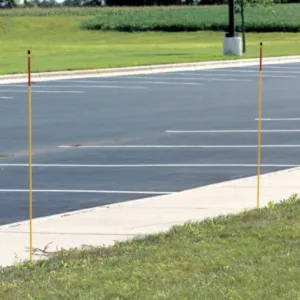Introduction
When it comes to choosing between fiberglass and metal reflective poles, many factors come into play. Whether you’re a city planner, a business owner, or a homeowner, making the right choice can significantly affect both the aesthetics and safety of your property. Let’s dive into the pros and cons of each to determine which is the better investment.

fiberglass reflective pole
Overview of Fiberglass Poles
Advantages
Fiberglass poles are known for their lightweight and flexible nature. This makes them easy to install and resistant to bending or breaking under pressure, such as during high winds. They don’t conduct electricity, offering an added safety benefit in areas prone to lightning strikes.
Disadvantages
On the downside, fiberglass can degrade over time when exposed to prolonged sunlight and extreme weather conditions, leading to brittleness and loss of color.
Overview of Metal Reflective Poles
Advantages
Metal poles, often made of steel or aluminum, are praised for their strength and durability. They can withstand significant force and are less likely to break or bend. Metal poles also offer a high level of resistance to fire.
Disadvantages
However, metal poles are susceptible to corrosion, especially in salty or humid environments. They’re also heavier, making installation more challenging, and conduct electricity, which could pose a risk during electrical storms.
Durability Comparison
Weather Resistance
Fiberglass poles outperform metal in resistance to corrosion but fall short in terms of brittleness after UV exposure. Metal poles, if properly treated or coated, can resist rust and corrosion but require regular maintenance to keep their integrity.
Lifespan
Generally, metal poles have a longer lifespan, especially when maintained correctly. Fiberglass poles, although initially robust, may degrade faster in harsh weather conditions.
Cost Analysis
Initial Investment
Fiberglass poles typically cost less upfront than their metal counterparts. This can be a crucial factor for projects with limited budgets.
Maintenance and Replacement Costs
Over time, the need for maintenance and potential replacement can make metal poles more expensive, despite their durability. Fiberglass poles, while possibly requiring earlier replacement, incur lower maintenance costs.
Installation and Maintenance
Ease of Installation
The lightweight nature of fiberglass poles makes them easier and cheaper to install compared to heavy metal poles.
Maintenance Requirements
Metal poles require periodic checks for rust and corrosion, necessitating treatments or paint applications. Fiberglass poles demand less maintenance but should be inspected for UV-induced wear.
Safety and Visibility
Reflective Properties
Both types of poles can be equipped with reflective materials. However, the effectiveness and longevity of these materials can vary depending on the pole’s surface and the environment.
Breakage and Injury Risk
Fiberglass poses less risk of injury upon breakage, breaking into larger pieces rather than the sharp edges associated with broken metal.
Environmental Considerations
Sustainability
Fiberglass poles are often touted for being made from recycled materials, though their end-of-life recyclability is less than metal poles.
Recyclability
Metal poles are easily recyclable at the end of their lifespan, making them a more environmentally friendly option in terms of material reuse.
Aesthetic and Design Options
Fiberglass poles offer more flexibility in design and can be manufactured in various colors and shapes. Metal poles, while customizable, have limitations due to their material properties.
Conclusion
Choosing between fiberglass and metal reflective poles comes down to weighing the importance of cost, durability, safety, and environmental impact. For those prioritizing initial cost and flexibility, fiberglass might be the way to go. However, for longevity and sustainability, metal poles could be the better investment.
FAQs
- Which pole type is more cost-effective in the long run? Metal poles, despite the higher initial cost, tend to be more cost-effective over time due to their durability and recyclability.
- How do weather conditions affect the durability of these poles? Fiberglass poles are susceptible to UV damage and brittleness, while metal poles can corrode in salty or humid conditions without proper treatment.
- Can either type of pole be customized for specific visibility needs? Yes, both fiberglass and metal poles can be customized with reflective materials and colors to meet specific visibility requirements.
- What are the safety considerations when choosing between these poles? Consider the risk of electrical conductivity with metal poles and the potential for UV degradation with fiberglass poles.
- Are there significant environmental benefits to choosing one type over the other? Metal poles offer greater recyclability at the end of their life, presenting a more sustainable option for those concerned with environmental impact.
 info@unicomposite.com
info@unicomposite.com


























